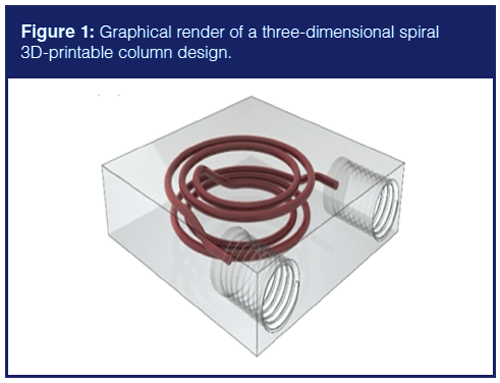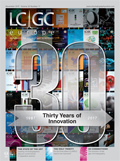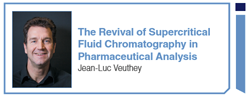The Evolution of 3D Printing
Looking back, there are a great many names immortalized across all fields of science and technology, which we first hear about in the undergraduate lecture halls, and perhaps only later learn to truly appreciate as the innovators and inventors of an impactful technology that has lasted the test of time. A couple of names that at present are probably not yet commonplace in the undergraduate science class are those of Hideo Kodama and Chuck Hull.

Looking back, there are a great many names immortalized across all fields of science and technology, which we first hear about in the undergraduate lecture halls, and perhaps only later learn to truly appreciate as the innovators and inventors of an impactful technology that has lasted the test of time. A couple of names that at present are probably not yet commonplace in the undergraduate science class are those of Hideo Kodama and Chuck Hull. For those readers for whom the names do not ring an immediate bell, well over 30 years ago Hideo was accredited with the first demonstration of a “printed” three-dimensional (3D) plastic model using ultraviolet (UV) photopolymerization (1), while Chuck first coined the term stereolithography, and also patented this new technology in 1984. The first 3D-printed objects produced by these pioneering individuals were rather unassuming, namely a small model of a house and a small cup for use as an eyewash. However, let’s contrast these humble beginnings with today’s situation.
Today, we see 3D printers on the international space station, or mass-producing parts for jumbo-sized airliners, and hear of innovative educators applying this new technology in a significant proportion of school classrooms across the developed world. Thus, despite the current relative anonymity-given the universal impact the technology has already had, and continues to have (in particular amongst the scientific community)-there can be no doubt that both Hideo’s and Chuck’s names will certainly gain the recognition they deserve in the near future.
Right now, it is fair to say that most laboratory-based scientists have already had some experience with the ongoing revolution that is “3D printing”. This is particularly the case for those working in technology and platform development, particularly low-cost diagnostic devices, sensors, and microfluidics. The enthusiasm to embrace 3D fabrication technology stems from the huge advantages possible in rapid prototyping and iterative device development. Couple this with the swift advances seen in the printer technology, providing ever-greater print resolution, and more accessible multi-material printers, and the advantages are clear. One does not have to look hard to find all manner of reviews and summaries of the impact the technology is having across diverse scientific fields, including, of course, analytical chemistry (2). However, the burgeoning and ominous impact upon the separation sciences has yet to be specifically collated.
It was exciting to hear the start of an ongoing debate at the HPLC 2016 meeting in San Francisco on the topic of “columns of the future….and beyond”, in which the main topic was the inevitability behind the imminent emergence of 3D-printed (or otherwise additively fabricated) liquid chromatography (LC) stationary phases. This debate continued at HPLC 2017, where following my own contribution, teasingly entitled “Another 12 Months Closer to 3D Printed HPLC Columns”, I rather whimsically, perhaps optimistically, predicted that within three years there would be commercial 3D printed columns on the market! However, all of us recognize there are some significant hurdles in the technology to get over before this prediction comes to fruition, not least a decrease of at least two orders of magnitude in obtainable print resolution. In the meantime, the research publications feeding my optimism grow from a trickle to a stream. Investigations covering the direct printing of porous sorbents and functional materials, which have already been applied in various forms of solid-phase extraction (SPE), filtration, and thin layer chromatography (TLC) (both silica- and polymer-based), have all been reported in the past 12 months (3–4). We have also seen the very latest theoretical studies on the optimal shape and design of 3D-printed stationary phases for LC separations from Conan Fee and colleagues, who are using the unique 3D-printing capability to answer some important fundamental questions, such as what exactly is the best shape or design of a stationary phase “unit” within a tightly packed or geometrically aligned porous body (5)? Our own work has recently explored new column geometries, including highly complex column designs, 3D-printed in metal (6) (using selective laser melting [SLM] print technology), which could simply not be produced in any other way. How such complex, tortuous column architectures impact band broadening in both open tubular and packed columns is now the focus of our group. Figure 1 illustrates the tortuous complexity in column architecture, which can readily be produced using various additive fabrication technologies.

Of course, what we have not seen to date are actual separations on 3D-printed phases-at least not those that could reasonably be described as even approaching high-performance! Unsurprisingly perhaps, because access to 3D-printer technology for most research laboratories might stretch at best to instruments with resolution approaching 100 µm, and only then for those laboratories with large pockets. We are excluding here reference to the elevated world of two photon polymerization-based systems, which many entire institutions can only dream of! However, let’s put that into perspective and imagine that we could already be getting close to printing phases that could, perhaps, approach the performance that LC columns packed with 20- or 30-μm particles could achieve in the late 1970s, or even the polymer monoliths of the early 1990s. Now we can see some actual practical applications on the horizon, albeit still far from what we currently consider standard for high performance liquid chromatography (HPLC). However, when I add to that thought a realization of how incredibly rapidly 3D printer technology has-and is-developing, I begin to see my prediction at HPLC 2017 as less optimistic and more realistic!
References
- H. Kodama, Rev. Sci. Instrum.52(11), 1770–1773 (1981).
- B. Gross, S.Y. Lockwood, and D.M. Spence, Anal. Chem. 89(1) 57–70 (2017).
- D. Fichou and G.E. Morlock, Anal. Chem.89(3), 2116–2122 (2017).
- N.P. Macdonald, S.A. Currivan, L. Tedone, and B. Paull, Anal. Chem. 89(4), 2457–2463 (2017).
- S. Nawada, S. Dimartino, and C. Fee, Chem. Eng. Sci. 164, 90–98 (2017).
- V. Gupta, M. Talebi, J. Deverell, S. Sandron, P.N. Nesterenko, B. Heery, F. Thompson, S. Beirne, G.G. Wallace, and B. Paull, Anal. Chim. Acta910, 84–94 (2016).
Brett Paull is a professor of analytical chemistry at the University of Tasmania and the Director of the Australian Centre for Research on Separation Science (ACROSS), and the ARC Training Centre for Portable Analytical Separation technologies (ASTECH), in Tasmania, Australia.

Regulatory Deadlines and Supply Chain Challenges Take Center Stage in Nitrosamine Discussion
April 10th 2025During an LCGC International peer exchange, Aloka Srinivasan, Mayank Bhanti, and Amber Burch discussed the regulatory deadlines and supply chain challenges that come with nitrosamine analysis.


















